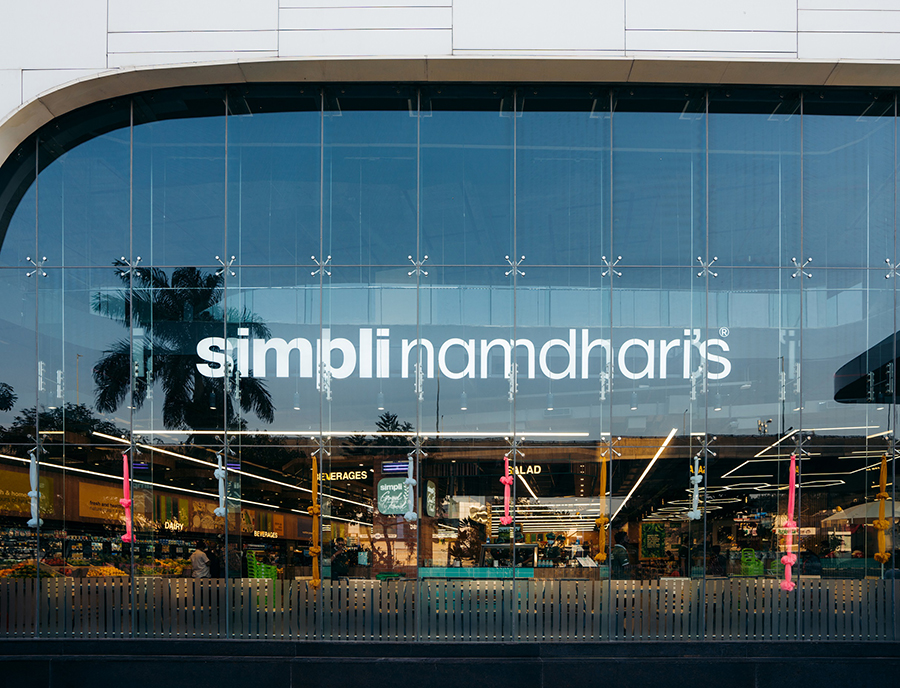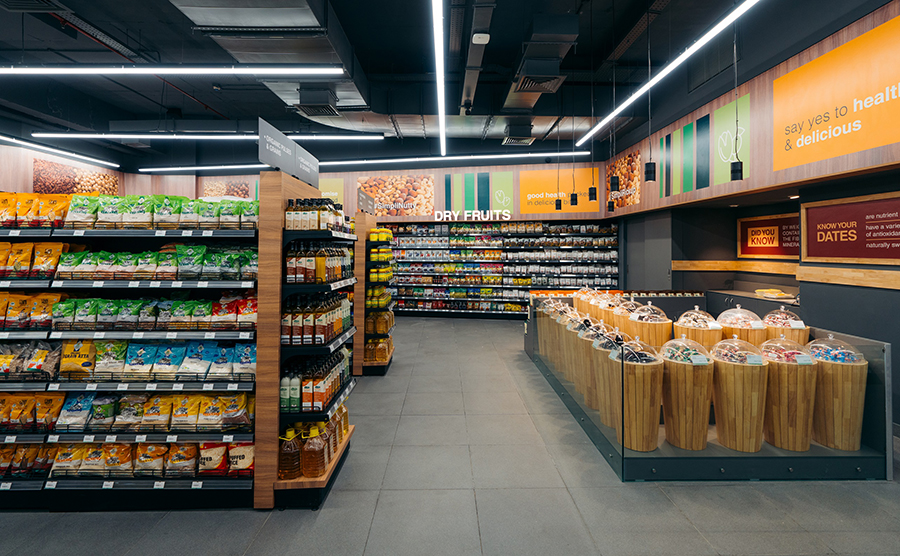[ad_1]
Can retail bridge the gaps in natural and organic foods eco-technique?

By Retail4Progress Bureau |
June 27, 2022
Though the demand from customers for organic and natural food items grows as more and additional Indians turn into acutely aware of their health and fitness and the top quality of meals they eat, the in general understanding of and accessibility to reliable natural foodstuff sill continues to be minimal. Can retail enjoy a bigger position in bridging the gaps in this eco-method? Gurmukh Roopra, CEO, Namdhari’s Group, shares some of his thoughts on this with Retail4Development.

 ‘Organic’ as a theory of usage is quickly rising on the radar of overall health acutely aware Indians, a growing tribe which is getting a lot more unique about the origin of the items they use and take in, foods in distinct. Without a doubt, with lifestyle ailments like Most cancers on the rise and with growing evidence that our way of life options, including the variety of foodstuff we opt for, acquiring a bearing on our wellbeing there is a growing need to have for chemical-no cost food items that are generated organically.
‘Organic’ as a theory of usage is quickly rising on the radar of overall health acutely aware Indians, a growing tribe which is getting a lot more unique about the origin of the items they use and take in, foods in distinct. Without a doubt, with lifestyle ailments like Most cancers on the rise and with growing evidence that our way of life options, including the variety of foodstuff we opt for, acquiring a bearing on our wellbeing there is a growing need to have for chemical-no cost food items that are generated organically.
Technically, organic and natural foods are defined as foodstuff that are created applying organic farming approaches, without having the use of any chemical compounds, and are also processed and packaged employing organic, chemical techniques. This means an end to conclusion natural and organic system. For most people looking for natural foodstuff, the worries lie not just in obtaining reliable natural food items, but also in differentiating in between the genuinely natural and those people simply just promoted with natural and organic statements. In the absence of plenty of awareness on what constitutes genuinely organic and understanding pertaining to qualified criteria for truly organic and natural goods, there is a large hole in between natural and organic food producers and customers. Also, because of to absence of sufficient volumes, high expense of production and huge margins, producers of organic and natural foodstuff are forced to manage higher prices and natural foods so conclude up starting to be obtainable to a restricted amount of shoppers who can afford them.
This is wherever shops can engage in a critical function. While there are a handful of suppliers who specialise in providing natural and organic foodstuff, there are also a growing range of retail retailers the place there are dedicated sections for organic and natural and residue -free/purely vegetarian foodstuff and food stuff items.
Bengaluru dependent Namdhari’s Group, for example, which has a chain of 31 Simpli Namdhari’s stores, focuses on supplying farm made, residue free and significant-quality fruits, veggies, staples and dairy products and solutions beneath 1 roof, with an assortment of about 1000+ in 3 main categories like staples, dairy, fruits & greens.
Gurmukh Roopra, CEO, Namdhari’s Group, states, speaking about the retail group’s technique to advertising natural and organic merchandise and sharing his observations on the overall pattern in the natural and organic house, “In the broader sense, organic as a principle and solutions proclaiming to be these types of have managed to attain highest visibility and focus in the write-up-Covid era. For that reason, buyer consciousness of organic products and solutions has also increased although education and learning stays low. In addition, the customers of organic and natural compared to non-organic products and solutions are demarcated by socio-economic standing more than any other variable.”
The natural parameters
Speaking further about Namdhari’s concentrate on organic products and solutions he provides, “Organic as a category has large frequency for a distinct concentrate on buyer and the place these shoppers glimpse at natural outside of day by day necessities. To provide them, Namdhari’s also houses select natural brand names that will have to go through the company’s products onboarding system before they make it to the retail outlet cabinets. Also, it has been observed that the assortment of organic goods has expanded into other categories these types of as food and non-food stuff, FMCG.”

So for shops stocking and selling organic merchandise, it’s also crucial to lay down selected parameters for makes to comply with. As Gurmukh, informs, “Namdhari’s functions to ascertain as considerably as doable via its vendor and products onboarding procedure, it vets through a checklist ensuring that organic and natural makes and products comply with the philosophy of natural goods. As a very first basic principle, it does not record any products that is not accredited by a reputed organic and natural certifying company. In addition, staying a grower of these types of merchandise, Namdhari’s will often request residue or organic transaction certificates for sure merchandise that it is familiar with are demanding to increase in natural and organic conditions.”
Difficulties in organic retail eco-program
All of these factors underline the difficulties inherent in the retailing of organic and natural food items. “The fairly comfortable enforcement of compliance alongside with the absence of technological know-how is a obstacle for verifying organizations issuing certificates at the growing level. This suggests that there are possibilities of even certified items currently being non-organic. Also, not all natural and organic products and solutions in shape the conditions that are laid down by these certifying businesses. The category is in its nascent phase, and there is not a way to examine if all get-togethers included are always complying to all the laws. Even when we batch examination our own in-dwelling solutions, we assure that they satisfy the residue-free standards as all organic and natural products are residue-free of charge,” describes Gurmukh.
He provides, conveying the misconceptions common in the place, “Also, there is a disconnect in specifics and beliefs when we say that natural is a lot more sustainable than standard agriculture. Yields are lower so, acreage is bigger, land and labour assets made use of for the objective of natural farming are substantially bigger as opposed to common agriculture. All these factors make natural and organic generate high priced.”
Even further elaborating on the difficulties, he shares, “Though a item is natural, the markup compared to common goods is extreme, limiting accessibility to a fraction of the industry and the pay out-off is not normally clear from the customer’s issue of perspective. This signifies that the opportunity for the phase to mature will usually be minimal and restricted. Also, as outlined before, customers are pushed to this class for its perceived advantages & quality-ness – there is a absence of shopper information and a lot more typically than not these added benefits are puzzled with the group itself.”
Types of shoppers
So the most significant stakeholders in the eco-process, the customers, have a huge purpose to engage in in how this eco-technique shapes up. Sharing his views on this, Gurmukh suggests, “At Namdhari’s, more than the years, we have noticed that in selected organic merchandise types there is surely a larger willingness to acquire as as opposed to other individuals. In some classes, exactly where the intake levels are higher (e.g. greens like onions and potatoes which are utilised routinely), the consumers will like to ration their expenses and seem for other possibilities. This is where residue-free options that are cost-effective & safe for consumption come into play to arise as a purely natural most well-liked preference for customers. Namdhari’s estimates that most rational individuals are only prepared to pay back a premium of between 10% to 30% additional than typical products and solutions for a “perceived” natural and organic advantage or other added benefits in an undifferentiated classification. ”
How Retail can make a distinction
Offered these assorted and hard dynamics in the organic and natural solutions room, no matter whether in conditions of certification, consciousness, accessibility, or pricing, the question once all over again arrives back to how retail can make a variation in growing and creating the organic foodstuff eco-process.
Gurmukh points out in this context, “Organised modern day retail and e-commerce platforms are the main intake conduits of natural products for city shoppers. Nonetheless, the emphasis is far more on making any organic solution readily available as opposed to creating the appropriate goods available that conform to the philosophy of harmless usage. Therefore, educating clients on what it implies to be residue-free and risk-free for consumption vs natural and organic is vital & will go a long way in developing consciousness. Offering people extra solutions to pick from – specifically those people who are not inclined to pay back the natural top quality, frequently will also assist. Additional inexpensive alternatives these as ‘residue-free’ products can consequently be regarded.”
Moreover, like in other types, the business bordering retail together with the retail answer companies and retail store designers /architects and shopper marketing and advertising agencies, could perhaps check out the whole natural and organic place as a new and expanding option and aid genuine organic foods sellers and producers by means of offerings that have interaction the buyers and build consciousness. These could array from in-communications and experiential keep design and style to on-floor activation and interactive visible merchandising.
[ad_2]
Source link

